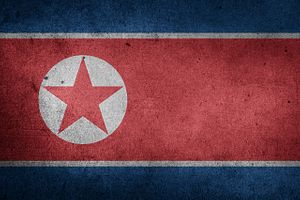North Korea fired two cruise missiles from Onchon country toward the Yellow Sea to the west of the Korean Peninsula, South Korea’s Joint Chiefs of Staff (JCS) said on Wednesday.
The JCS said that the U.S. and South Korean intelligence officials are analyzing the performance of the missiles.
North Korea is banned from developing and testing ballistic missiles United Nations Security Council resolutions. Unlike the North’s ballistic missiles, its cruise missile program is not in violation of UNSC resolutions.
Wednesday’s missile test came hours before South Korean President Yoon Suk-yeol held a press conference to mark his first 100 days in office. It is the first missile test Pyongyang has conducted following up on North Korean leader Kim Jong Un’s provocative remarks vis-à-vis Yoon last month.
As Seoul and Washington have kicked off their pre-drills for summer-time military exercises – Ulchi Freedom Shield, scheduled to begin next week – South Korean media outlets have reported that the missile test could be Pyongyang’s response to the South Korea-U.S. joint military drills. However, given the expanded scale of Ulchi Freedom Shield this year, the North’s cruise missiles are not a proper response to confront them directly.
Last week, Kim Yo Jong, the North Korean leader’s powerful sister and the main voice on inter-Korean relations, warned of “deadly retaliatory” countermeasures after accusing the South of spreading the coronavirus into the North via leaflets and objects sent in April. Seoul’s Unification Ministry denied the accusation and reaffirmed that there is no connection between the North’s outbreak and a civic organization’s leaflet launches.
Considering the capabilities of the North’s cruise missiles versus other advanced missile weapons it tested months ago, it also seems unlikely that today’s test was meant to fulfill Kim Yo Jong’s warning.
However, a different rationale can help explain Wednesday’s missile test: a response to Yoon’s “audacious initiative.”
During his speech to mark the nation’s liberation from Japanese occupation on Monday, Yoon proposed that North Korea take steps toward denuclearization and offered his “audacious initiative” as an economic package to revive the North’s devastated economy, caused by the U.S. and U.N.-led economic sanctions and the COVID-19 pandemic.
Yoon offered more details on the initiative Monday, but it is still questionable whether his “audacious initiative” is markedly different from the policies that his predecessors already tried in the past decades.
Since the late 1990s, South Korean presidents have tried to engage in dialogue with Pyongyang to deter its nuclear and missile developments. However, neither hawkish nor dovish ways succeeded to entice Kim’s regime to consider giving up its nuclear programs. On the contrary, Pyongyang has accelerated its efforts to complete the development of nuclear weapons, based on its deep belief that nuclear weapons are the only guarantee that can prevent U.S. preemptive strikes.
Two months after the North’s sixth nuclear test in September 2017, Kim Jong Un publicly declared that his country was now nuclear armed. This year, he has warned that the international community will witness his new tactical nuclear weapons.
The Yoon administration seems to have been trying to find room to renew the stalled inter-Korean dialogue. North Korea’s cruise missiles test might be Pyongyang’s answer, rejecting Yoon’s audacious initiative as part of the denuclearization process.
Also, Pyongyang might not take Yoon’s offer at face value, given his previous changes in stance on North Korea.
Yoon said he does not want to change the status quo in North Korea by using force during his press conference on Wednesday. However, Pyongyang will remember his previous hawkish remarks – including reserving the option of preemptive strikes – that elicited Kim Jong Un’s direct threat toward Yoon and his administration last month.
During the presidential campaign last year, Yoon opened the option of preemptive strikes against North Korea if there are clear signs of the North preparing to launch missiles toward the South’s soil. He also brought up his preference for a nuclear-sharing agreements with the United States, but Washington immediately shut down the idea.
In Wednesday’s press conference, Yoon reiterated his shifted stance by saying that his government has no plans to pursue its own nuclear deterrent.
Unlike his predecessor Moon Jae-in, who consistently presented a dovish stance to tackle North Korea’s nuclear and missile issues through diplomatic overtures, Yoon has mixed his policies over North Korea – which might give the impression to Kim Jong Un that Yoon is not a suitable president he can negotiate with.
In this context, North Korea might conclude that dialogue with Seoul and Washington is unnecessary at a time when China and Russia are playing a power game with the United States. Seoul’s desire to rebuild ties with Japan and its willingness to invigorate the trilateral military drills with the U.S. and Japan will also be off-putting to Pyongyang. So far, it seems that North Korea would not seriously consider any approach from the Yoon administration, but will wait for the situation to change in its favor – perhaps hoping to negotiate directly with Donald Trump again if he wins in the 2024 U.S. presidential election.

































